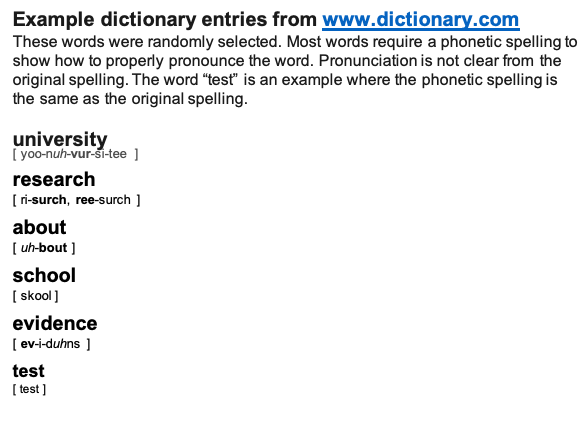Reading proficiency is based upon brain development
Reading proficiency requires the development of a specific set of foundational skills.
Students who achieve reading proficiency have developed a sufficient skill set.
Students who struggle have a SKILL GAP. Learn more
Students who achieve reading proficiency have developed a sufficient skill set.
Students who struggle have a SKILL GAP. Learn more
What is the best instructional approach to help the most students
|
Facts about the current reading instructional paradigm in the US
The purpose of this site is to explore an alternative theory to explain why the current system is failing so many students. We believe that most teachers are caring, competent professionals and are teaching based upon the current science of reading, yet the system is also failing them. Fix the system, provide the proper curriculum, and most teachers and students will succeed. It is time to rethink the current science of reading for it is failing on a massive scale and negatively impacting the futures of so many students, especially Students of Color and those impacted by poverty. |
Summary of the Current Science of Reading
|
Possible Failure Modes
|
There are three possible failures modes or combinations of the three modes.
Most phonics proponents actively advocate that the primary failure mode is inadequate instruction. They claim that the phonics-based curriculum is research and evidence-based and thereby cannot be at fault for the low scores. Article after article or social media post claims that teachers are just not teaching phonics adequately. That may be true in limited circumstances, but cannot fully explain the widespread failure. We disagree with this position and present evidence below to demonstrate that low scores are primarily the fault of curriculum limitations, which in turn leads to inadequate instruction because of the curriculum issues. Student learning capacity and home-life experiences also impact learning effectiveness. Students who have a Skill Gap must receive adequate skill development training to close the Skill Gap to empower effective learning. |
Alternative theory
|
Why Phonics-based Instruction is "Phailing" Most Students
1. English is phonetically opaque. It is not phonetically transparent. |
|
|
Phonics does play an important role in learning how to read. Students need to understand the connection between letters and the sounds of language. However, as noted above, English is not a language where sounding out words is directly practical in most cases. Over time students figure out that most words have to be memorized and that only sometimes can direct letter-to-sound correlations be used to help learn new words. For example, once a student learns how to decode the word "cake", that helps them to learn similar words such as "take" and "bake" more easily. Once they learn the word "cat" that letter blend is helpful to learn new words that use "cat" as part of the word such as "category". When students encounter a new word they often can use similar words they already know to give them guidance on how to pronounce this new word. However, that technique cannot be relied upon consistently. In the end, a student must memorize the name of each word so they can recall it automatically when reading. More on this topic is discussed below. There is a huge difference between the phase of trying to sound out a word to originally learn it vs. fluent reading. Fluent reading requires the memorization of the name of the whole word. |
2. Reading requires automatic whole word recognition and rapid naming linked to meaning |
|
Please read a sentence or two on this page and contemplate the nature of what really took place.
You likely did not "sound out" any words or consciously apply any rules of phonics if you read fluently. Reading fluently with comprehension involved the following major systems in your brain: You visually saw the information through your visual optical system and the sensory input was transferred to the proper place in the brain for processing.
Phonology is foundational to building reading skills, but it is not sufficient alone to empower a student to become a fluent reader with comprehension. Fluent reading with comprehension requires building additional skills that strongly rely upon visual processing, pattern recognition, memory, naming, sequencing, syntax, and meaning. Fluent reading with comprehension requires automatic word recognition linked to meaning. Based upon the long-standing national scores, it is evident that the current phonics-based instructional system is not sufficient for most students, especially those who have a Skill Gap. However, we are not advocating traditional whole language instruction as an alternative. That system is not sufficient alone either. But, it is important to realize that fluent reading requires the recognition, naming, and meaning of whole words. The question is how best to develop the full skill set that empowers fluent reading with comprehension. |
3. Transition Gap from pre-reading skills to reading fluency with comprehension
|
Most claims by phonics curricula of being evidence-based are linked specifically to improvements in phonics-related test scores. They are not based upon improvements in reading fluency and comprehension. This fact helps to explain why phonics programs are not necessarily helping to improve reading comprehension scores. We checked the What Works Clearing House for studies that prove phonics programs improved reading comprehension scores. We could not find any. We found plenty of studies showing that various phonics-based interventions improved phonics-based test scores. However, we did find a study of one of the major phonics early reading programs called Smarty Ants by Achieve 3000. The study concluded that there was no improvement in early reading fluency. (Study Report) Interestingly, this program claims to be evidence-based and is one of the leading programs approved by states for use in schools. There are two recent studies that claim phonics is not working:
|
|
|
4. Phonological Awareness |
|
5. Non-content words |
6. Early vocabulary is often too limited, confusing and boring
|
7. Mixed up letters |
|
There is an interesting puzzle that has circulated for some time which challenges conventional wisdom about how we read and the role of phonics in the act of reading. People react to it differently. Many phonics advocates dismiss it, but the reality presented cannot be ignored. The information below shows two paragraphs where the letters in words are mixed up. The beginning and last letter are correct for each word, but the letters in between are mixed up. Yet most people who read fluently can actually read this mixed up presentation of text. See for yourself. The following quote comes from a blog created by a literacy writer named Mem Fox from Australia.
And if phonics is so important, so fundamental, so essential—as so many claim—and so crucial to our ability to make meaning from text, how come we can read the following with ease? Aoccdrnig to rscheearch at an Elingsh uinervtisy, it deosn’t mttaer in waht oredr the ltteers in a wrod are, the olny iprmoetnt tihng is that the frist and lsat ltteers are in the rghit pclae: the rset can be a toatl mses but you can still raed it wouthit a porbelm. This is bcuseae we don’t raed ervey lteter but the word as a wlohe. So, hey, waht does this say abuot the improtnace of phnoics in raeidng? Prorbalby that phonics ins’t very imoptrnat at all. How apcoltapyic is that, in the cuerrnt licetary wars! Mem Fox, https://memfox.com/for-parents/for-parents-the-folly-of-jolly-old-phonics/ If you are able to read the “mixed-up” paragraph above, it clearly shows that you are relying upon the visual memory of the whole word and not the sounding-out principles of phonics in order to read. |
8. Sequencing |
|
Visual sequence in nature is often not critical. If you see a deer and two fawns, it usually does not matter in what order they appear. You would still say I see a deer and two fawns, and the meaning would be clear. If you see a lion in nature, it would not matter if you see it from the left side or the right side. Mirror images of objects usually do not matter as you recognize the item either way. Left side vs. right side does not matter in most cases. What matters is that you recognize the lion no matter which way they are facing (15).
However, in text order does matter. There is a difference between a "b" letter and "d" letter even thought they are mirror images. The difference must be learned. It is important to read from left to right and not jump around in the sentence when reading. It is also important to decode a word from left to right. In the following three words, they all have the same letters, but letter order creates a different word. (now / won / own) Most students pick this concept up naturally, but many do not. It requires explicit instruction to address and must be systematically evaluated. Most traditional programs do not address this key element of reading adequately. |
9. Dyslexia |
|
Dyslexia is a term that is often used to represent that a student has difficulty with reading properly. The word itself does not necessarily identify the underlying cause of the difficulty. Some students reverse letters or words, others do not but still have difficulty reading properly.
Several studies have shown differences in brain development and neural network activation between good readers and struggling readers using fMRI scans (16). Some researchers claim that 20% or greater of students have dyslexia. According to some researchers, the symptoms of dyslexia are similar for students who have a true brain dysfunction and students who have experienced inadequate instruction (17). We believe that most students who have difficulty with reading, and who may or may not be diagnosed as having dyslexia, can benefit from the proper training to ensure development of the full set of skills that empower reading success. Closing the Skill Gap can help most students. |
10. Some students seem to learn how to read easily while others do not |
|
11. Cognitive processing skills |
|
12. Individual personal student factors matter |
|
Conclusions
|










